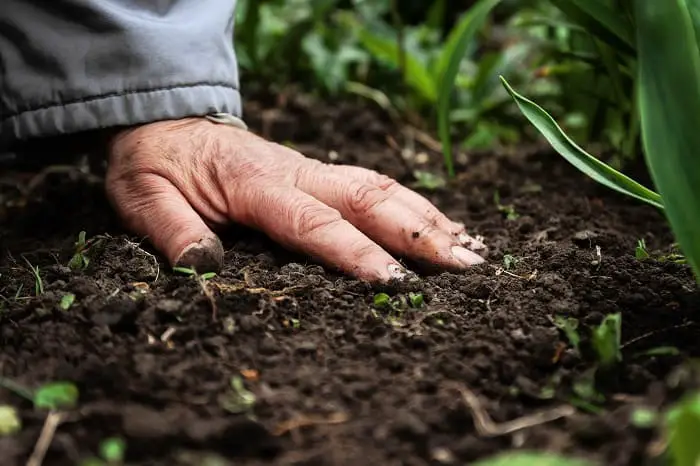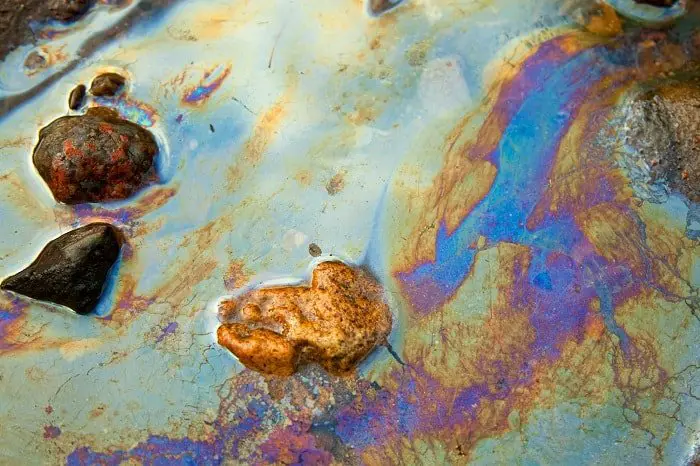Last Updated on December 28, 2021 by
If you’ve been in the dark about the best time to fertilize your lawn before it rains or after it rains, then this article will tell you the best time to do so with tangible reasons. You might be thinking about the best time to fertilize lawn before or after rain.
Most gardeners love to fertilize after a heavy downpour while some prefer to fertilize before it rains. Both methods come with their pros and cons and that’s what will be our focus here.
Lawns accentuate the beauty of every yard including yours. They need to be fertilized in order to stay healthy and grow rapidly. While adding fertilizers to your lawn is a recipe to keeping them healthy and greenish, timing is of the essence. In this case, the timing isn’t about the period of the day. But the climatic condition as at the time of fertilizing.
Fertilizing your lawn for optimal growth, lush greenery, and denser grasses are aggregated into one thing. While fertilizing at the right time is another thing entirely. If you are not getting it right, you will spend more on fertilizers and will be investing all your time and efforts in futility.
But that will be after we’ve gone through the benefits and downsides of fertilizing before rain and after rain.
What is the Best Time to Fertilize Lawn Before or After Rain
Pros
Fertilizing after a torrential downpour increases the potency of the fertilizer on the lawn. Most of the time, heavy rainfall could wash away the fertilizer out of the lawn. This cause mini water pollution around the area.
However, fertilizing after the rain has no effect on the environment in terms of pollution of water bodies. This method ensures the fertilizer sticks to where it has been designated. Most synthetic fertilizers aren’t trusted for quality and can easily become inactive by the presence of excessive water intrusion.
Cons
The downside of this post-rainfall fertilizing is that it hinders the gardener from leveraging or utilizing the natural means of fertilizing lawns. This can cause the fertilizer to be sheer active on the lawn through the inclusion of other basic organic nutrients.
By natural means, I mean the inclusion of nitrogen into the lawn through rainfall. Nitrogen is one of the fundamental nutrients needed by every lawn to survive and flourish. It can be added to the lawn via a heavy rainfall.
Beyond this natural advantage, it is almost impossible to thoroughly fertilize your lawn and incorporate the entire land area in the process. You are bound to skip out some areas unintentionally if you are just sprinkling after the rain.
Rainfall helps disperse the chemical across the entire land area of your lawn. That’s a full-fledged job done by nature and on your behalf.
Fertilizing Lawn Before Rain
Pros
Fertilizing before a torrential rain gives room for elements of nature to get involved in the fertilization process and aid a seamless process of fertilizing. Your lawns need nitrogen; an element abundant in nature up to 78% to grow optimally and be in good shape.
This nitrogen can be added to your lawn via rainfall and will go a long way in supplementing the fertilizer you will be including in your lawn. Whether you are using organic or synthetic fertilizer, nitrogen comes as a natural supplement to the entire process.
Cons
Despite the beneficial nature of this method, it can lead to negative consequences on the environment. When the rain comes in a torrential style, it can wash away some of the fertilizer into stormwater systems.
When this polluted water empties itself into other larger water bodies, it leads to water pollution in the environment and which can have a devastating effect on it in the long run.
Fertilizing your lawn using this method can terminate the lives of aquatic animals and render water bodies useless for a period of time. You don’t have to neglect the fact that most people depend on fishing for survival and you could be making life difficult for them by ruining their source of livelihood.
The Best Time to Fertilize Your Lawn
While both have their highlights and lowlights, it’s important that you preserve the sanity of the environment and that of aquatic life. This makes fertilizing after rain, the best time to fertilize your lawn.
Granted, you are bound to lose out on the natural benefits that rainfalls provide in the provision of Nitrogen. And how it helps in the proper dispersal of the fertilizer around your lawn ensuring no land area is left out in oblivion. But then this pattern will be having a negative impact on the environment around you.
These chemicals can within a couple of hours, transport themselves through canals. Then thru drainages into larger water bodies and wreak tremendous havoc on the aquatic splendor of nature.
Nitrogen itself, being the major elemental constituent that lawns absorb from fertilizers alongside a bounty supply from rainfall can be converted into nitrate which is dangerous both plants and animals.
Best Time to Fertilize Lawn Before or After Rain: An Alternative Method
If you feel like you’ll be losing out the benefit of the rain in helping to properly water-in your fertilizer, well you can still water-in your fertilizer without necessarily ruining the quality of water bodies around you.
A catch-can test will do the trick for you, it will help you to know how much water your lawn is actually receiving. With the catch-can test, you can water-in your fertilizer into your lawn accurately. With the full knowledge of how long the irrigation (an alternative to rainfall for proper dispersal) will last while carrying out an effective job.
You will need to add at least 1/4 inch and no more of 1/2 inch of water to your lawn after fertilizer application. Consider doing it within the first 24 hours of the application.
How Do You Go About The Catch-Can Test?
Get some empty cans and position them around your lawn before you begin the water-in. With the cans in position, you can measure the amount of time it will cost to fill up the can around a quarter inch. At this measurement, the lawn can fully absorb the nutrients down to the very roots of your lawn.
Fertilizing and watering-in afterward can compensate for any benefit lost to ditching the option of watering before a heavy downpour. Even though it might not really suffice but at least you would have played your own part. Protecting your environment from the numerous pollution that characterizes its daily existence.
You can check this video to see how it works.
FAQs
Should I fertilize my lawn right before it rains?
The short answer - yes, you should. However, you'll have to wait until the rain has passed. If you fertilize too early, your lawn will be less likely to grow and there is a chance that it could die.
The long answer - it depends on the type of lawn fertilizer you are using and the type of grass where your lawn is located. There are two types of fertilizers: slow release which provides nutrients in a gradual manner and fast release which gives nutrients in a concentrated manner. Slow release fertilizers are recommended for lawns with poor soil or those with drought conditions and fast release fertilizers are recommended for well-drained soils with high fertility levels (i.e., lawns that require little watering).
What month Should I fertilize my lawn?
It is best to fertilize your lawn between April and September because the soil will be more moist and the plants will be able to absorb the nutrients more easily.
What fertilizer will make my grass green?
Most people think their grass is green because of the color of the soil, but that's not true. The color of the grass is a result of nutrients in the soil. That's why fertilizers contain nitrogen, phosphorus and potassium - these are needed to make the grass green. If your lawn needs more nutrients, you could use an organic fertilizer like compost or manure.
Should your lawn be wet before fertilizing?
The short answer is yes. But the long answer is that it depends on the type of fertilizer you use.
The American Society for Horticultural Science believes that your lawn should be wet before you fertilize in order to absorb more nutrients and water more effectively. They also believe that if it rains, then you're going to need to hold off on fertilizing for at least 12 hours after the rain has stopped.
Fertilizers contain nitrogen, phosphorus, potassium and other nutrients which help strengthen your lawn by improving its root system's ability to draw up water and nutrients from the soil.
Is it too late to fertilize my lawn in November?
Many experts say that yes, the early autumn is the best time to fertilize your lawn. They argue that lawns generally recover much quicker than fields of crops and annuals, so there's no need to wait until spring.
How can I make my grass thicker and greener?
Grass can be seen as a landscape feature. The natural grasses have the capability of becoming greener or thicker depending on the different factors such as weather condition and the time of the year. Here are some of the ways that you can improve your lawn's appearance and functionality.
1. Diversify your plants:
2. Take care of your trees:
3. Increase water drainage
4. Improve soil quality
5. Avoid grazing animals
Can you fertilize after first frost?
When it comes to gardening, it is important to know when is the best time to start certain tasks. This article will teach you when you can and cannot fertilize your plants.
Spring: It is possible to fertilize your plants after first frost as long as they are in pots. Fertilize the plant with a liquid fertilizer that contains nitrogen and phosphorus, which will help them grow green and strong.
Fall: Fall is the best time of year to start any kind of planting project because the ground has cooled down enough for the roots of the plant to grow deep into the ground and develop a base for future growth.
Tony Manhart is a passionate gardener who has been tending to gardens for over 20 years. He takes pride in creating beautiful outdoor spaces with plants, trees, and shrubs that can thrive in any environment. He loves to share his knowledge with others and has taught classes on gardening basics and advanced techniques. He is committed to sustainability, using natural and organic methods to create and maintain gardens. He also works with local organizations to create green spaces for communities. When he’s not gardening, Tony enjoys hiking, reading, and spending time with his family.




